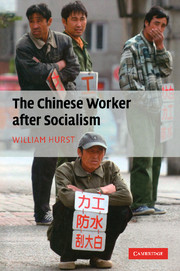Book contents
- Frontmatter
- Contents
- List of illustrations
- Preface
- Introduction
- 1 Regional political economy and labor reform
- 2 The roots of unemployment and the political economy of lay-offs
- 3 Remaking China's urban welfare and labor market policies
- 4 Pathways to re-employment
- 5 Contention, protest, and social order
- Conclusion
- Appendix: List of interviewees
- Bibliography
- Index
4 - Pathways to re-employment
Published online by Cambridge University Press: 02 July 2009
- Frontmatter
- Contents
- List of illustrations
- Preface
- Introduction
- 1 Regional political economy and labor reform
- 2 The roots of unemployment and the political economy of lay-offs
- 3 Remaking China's urban welfare and labor market policies
- 4 Pathways to re-employment
- 5 Contention, protest, and social order
- Conclusion
- Appendix: List of interviewees
- Bibliography
- Index
Summary
Introduction
State responses to laid-off workers' problems were uneven across space and time. Across almost all Chinese cities, however, self-employment and entrepreneurship emerged as important avenues for re-employment, just as Chin Kwan Lee found in her study of Liaoning. Political status within the old planned system, as well as workers' personal particularistic connections (known in China as guanxi, but similar to what many political scientists and sociologists refer to as certain types of “social capital,” or what many scholars of Russian politics and society call blat), affected opportunities for entering the growing ranks of the self-employed. The structure and range of workers' social ties were instrumental in shaping their job opportunities, even in comparison with job-seekers elsewhere who rely on similar webs of connections.
The effects of these aspects of working class society were mediated by regional disparities of market opportunity in the entrepreneurial sector. Local governments with sufficient capacity actively promoted and protected all types of market opportunity in ways that cities with fewer resources could not afford. This chapter explains why laid-off workers in most regions rarely succeeded in finding new jobs in the non-state sector. It discusses why workers in regions with more market opportunity relied less on particularistic connections or political status, while entrepreneurial employment depended more on connections and status the less market opportunity was available.
Central Coast cities with strong capacity managed to block the entry of rural-to-urban migrants into lower strata of the labor market, preserving these opportunities for laid-off SOE workers.
- Type
- Chapter
- Information
- The Chinese Worker after Socialism , pp. 86 - 107Publisher: Cambridge University PressPrint publication year: 2009

